Laundry Robot
Laundry Robot
A robot that can organize laundry based on color.
Nick & Eduardo
This robot can differentiate between black and white laundry, or other items with these same colors. With inputs including the distance sensor and the color sensor, as well as the button to start the program, this robot identifies the color of an object in the box, and opens up the corresponding bottom flap. To open and close the flaps, the robot utilizes servos in a pulley-like manner. Some tape strips are curled around the servos in order to transform circular motion into vertical motion to lift and release the flaps. The openings are small, and work the best with smaller, more rigid objects.
Model 1
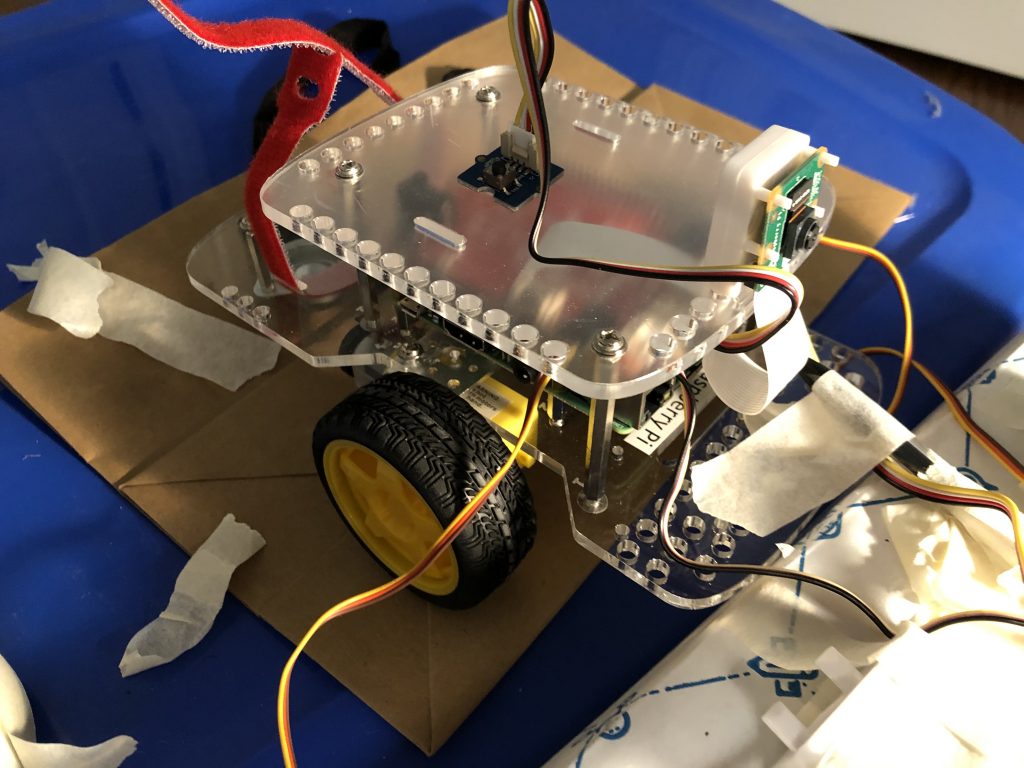

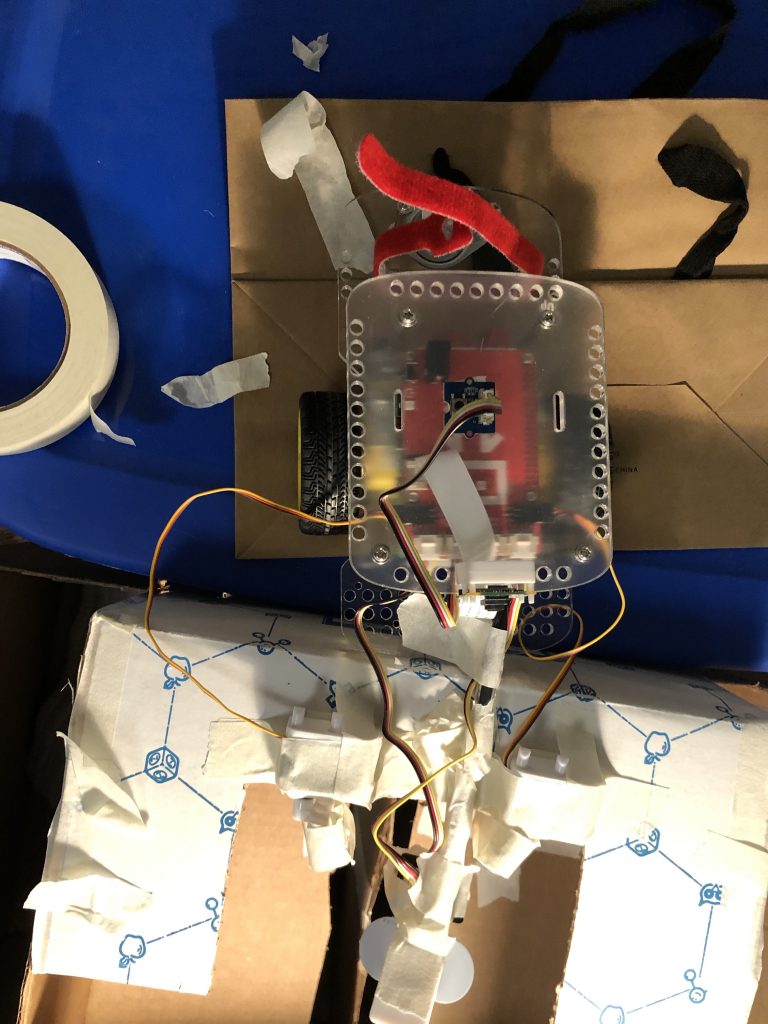
Model 2
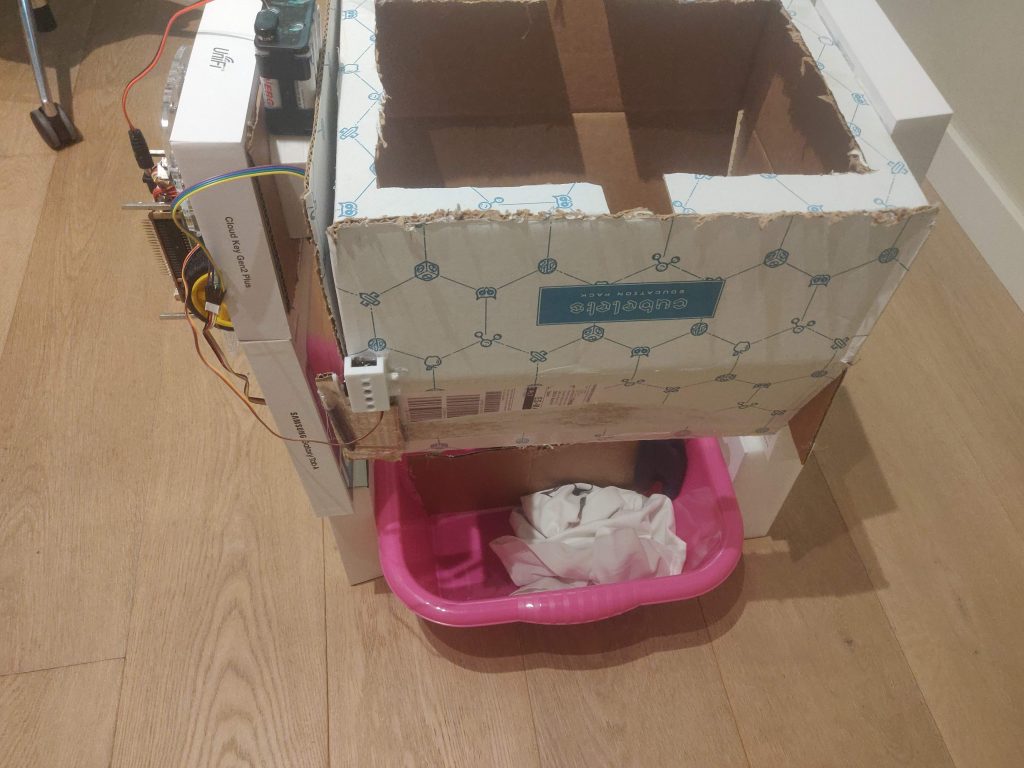
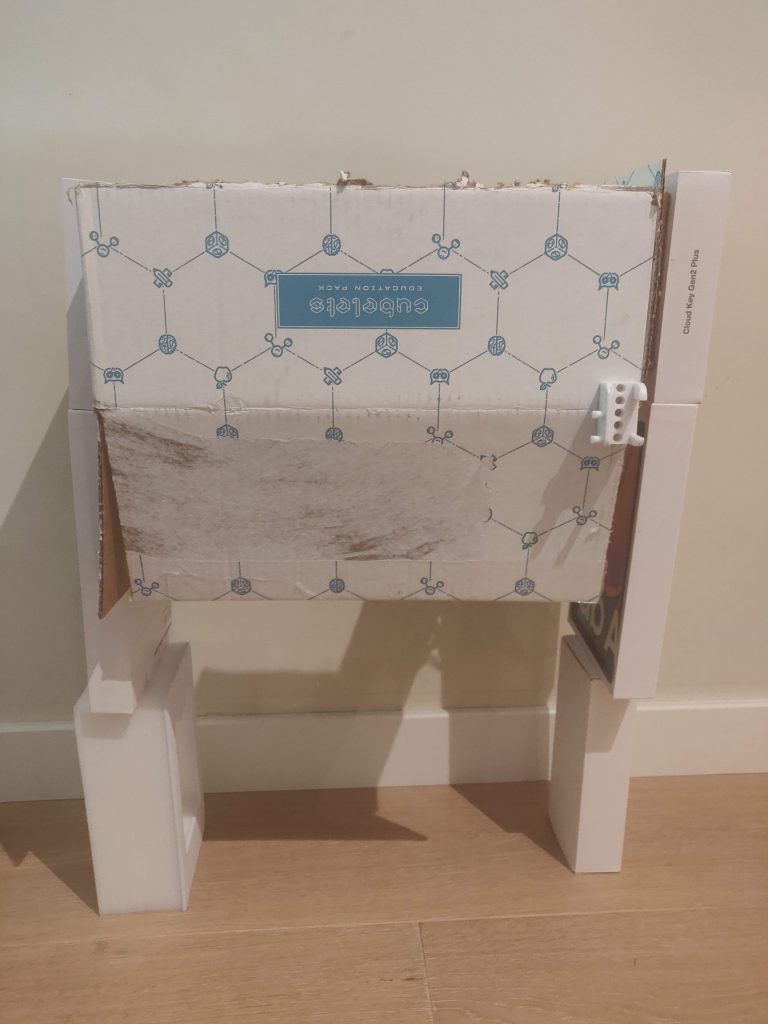
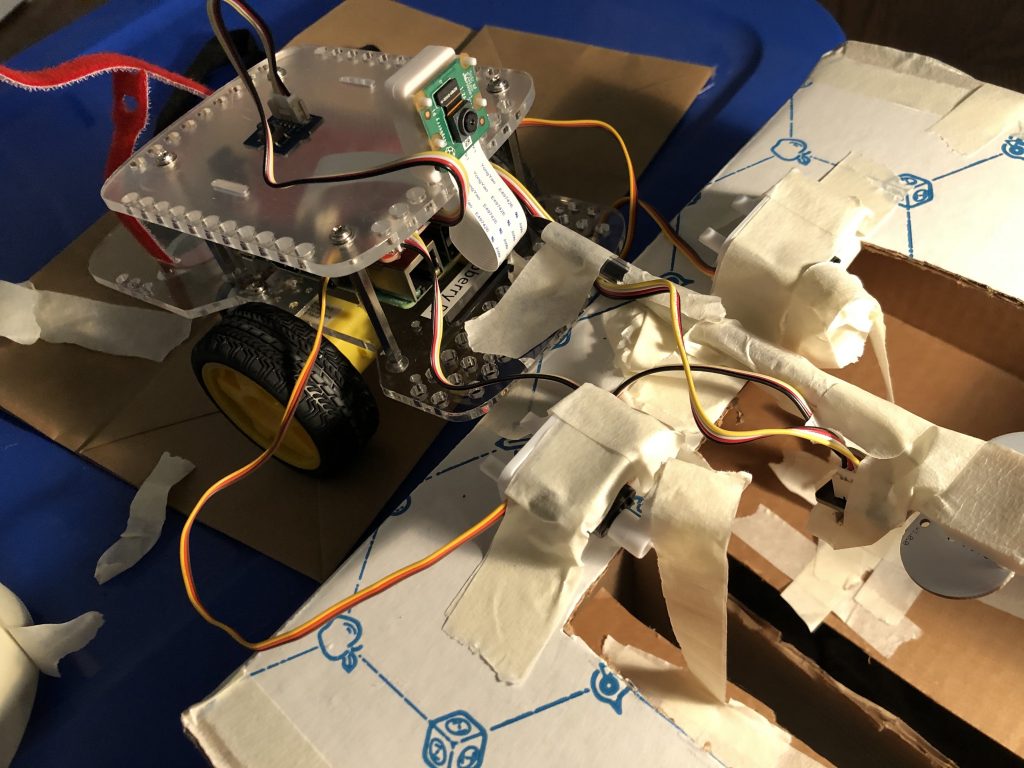
Very cool (and useful) robot, and excellent presentation too. This system you’ve created seems like it could have so many other additional uses — this is an excellent sorting robot.
Thanks! It can definetely be applied to so many other things!
For sure! Experimenting with different colors, and more than two sorting groups are things I am interested in adding in the near future.
You presentation is very well done!
I’m glad you enjoyed it!
This was a really creative idea! You did really well creating a system that worked with what you had.
Thanks! We tried to use the minimum oammount of materials.
My model (Nº 2) was just made out of cardboard, scrap 3d prints, scrap metal pieces and (too much) hot glue.
Thanks! I am definitely looking towards refining the design and maximizing the efficiency and consistency of the sorting. With more time, I feel that this device could be greatly improved.
Very good, I could use this without much hesitation
Thank you!
Thanks!
I like how you used the color sensor.
Thanks! This is the area where we most definetely needed to work on as the LED light includsed sometimes was not powerrful enough.
I definitely agree. I found myself using a lamp to find the perfect lighting for color sensing.
I really like how you connected the robot to the flaps, super creative!!
Thank you! i’m glad you liked it. In my model (2) I used servo motors which controlled the flap using a rail as the servoo had to be off axis, this allowed the flap to not always be aliged with the servo but work anyway. 🙂
Great practical applications!
Thank you very much!
Thank you! My favorite part about creating something is figuring out how it will help others.
Nice use of the box that the robot came in! You used a lot of the sensors we worked with, and I especially liked the connection of the flaps and the servo!
Thanks! In my model (2) I used servo motors which controlled the flap using a rail as the servoo had to be off axis, this allowed the flap to not always be aliged with the servo but work anyway as the rail allowed it to slide up and down.
This is a great idea!! Wish I had this in college….
I imagine 🙂 Thank you veryu much!
This would definitely be super helpful haha. Thanks!
I totally need this robot in my life! Neat mechanical design too 🙂
Thanks! As i’ve explained in other comments: In my model (2) I used servo motors which controlled the flap using a rail as the servoo had to be off axis, this allowed the flap to not always be aliged with the servo but work anyway as the rail allowed it to slide up and down.
Yes, this robot could be super helpful! And Eduardo’s servo-to-flap connection was super effective! The curling of the tape to hold the flaps in my design fell short in completely opening the flaps, and Eduardo’s alternative approach displays how one can most efficiently use the range of the servos. Nice!
Really great work from both of you! I’m impressed with both your mechanical design and coding work on this project, especially because the color sensor can be a difficult one to work with! With materials that are sturdier than cardboard, this can definitely grow into a really polished and strong product!